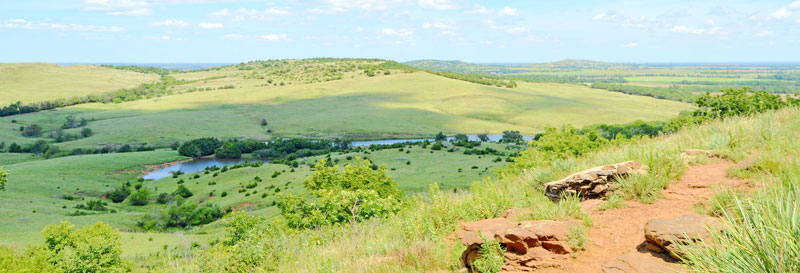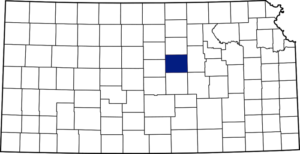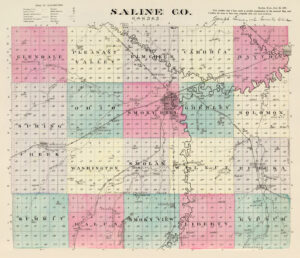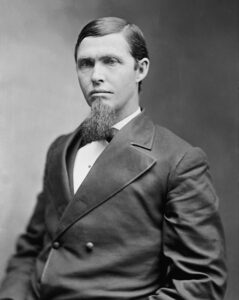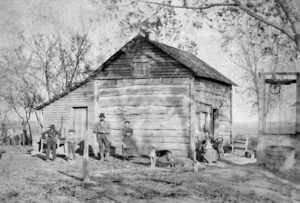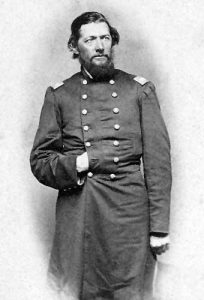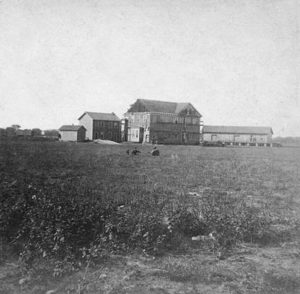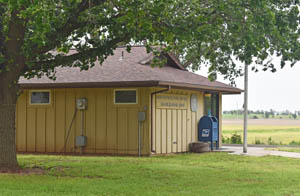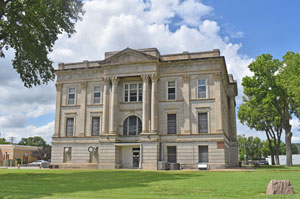Towns & Places:
Falun
Gypsum
New Cambria
Salina – County Seat
Coronado Heights
Saline State Fishing Lake
Saline County, Kansas, one of the state’s central counties, is the fourth county south of Nebraska and the eighth from the Missouri River. It is bounded on the north by Ottawa County, on the east by Dickinson, on the south by McPherson, and on the west by Ellsworth and Lincoln. The name Saline was given to the river and the county because of the salt marshes in the area. As of the 2020 census, the county population was 54,303. The largest city and county seat is Salina.
The county’s surface is level bottomlands, rolling prairie, and highlands, each having about an equal area. The Saline and Smoky Hill Rivers meet near the eastern line, and the bottom lands along their banks form a basin through the central part of the county, the sides of which are much higher on the north than on the south. There is a range of high hills near the southern boundary called “Smoky Hill Buttes”; an elevation on the north called “North Pole Mound,” one eight miles east of Salina known as “Iron Mound,” and in the west rises “Soldier Cap.” Early on, limestone, sandstone, gypsum, and salt were found in considerable quantities. The Solomon River flows across the northeastern part of the county; the Saline enters on the northern boundary and flows southeast; the Smoky Hill enters from the south, flows north to Salina, and from there east about eight miles, where the Saline joins it. The smaller streams are the Gypsum, Hobbs, Dry, Spring, Mulberry, and Buckeye Creeks.
The earliest settlements were not permanent. The first one of which there is any authentic account was made by Preston B. Plumb, afterward a United States senator. He came into the county in 1856 with Mr. Hunter and Major Pierce, and the three projected a town at the mouth of the Saline River, which they called Mariposa. The place was soon afterward abandoned; a cabin and a well were the extent of the improvements. In the same year, the territorial legislature chartered what was known as the “Buchanan Town Company,” of which Richard Mobley, a pro-slavery man and later a member of the Lecompton Constitutional Convention, was president. This company was to have several thousand acres of land. A site was selected near the mouth of the Solomon River in Saline County, and a town was laid off in 1857. Eight log cabins were built, but only two were ever occupied. On the death of his child, Mr. Mobley abandoned the town project, and Saline County was without a settler.
However, a permanent settlement was made the following year by Colonel W. A. Phillips, who, in 1857, with a companion named Smith, had made a tour into the valleys of the Saline and Solomon Rivers on foot. In February 1858, he returned with A. M. Campbell and James Muir. Passing the sites of the two former settlements, they made their way up the Smoky Hill River to where the stream turns due south and founded the town of Salina. The following month, two brothers named Schipple, who had erected a cabin on the Saline River that winter, came and settled on their claim. The first merchant in the county was George Pickard, who built a store and brought a small stock of goods to Salina. On arriving at the Solomon River with his goods, he found the government bridge had been washed out by the floods, as were the bridges over the Saline and Smoky Hill Rivers. He constructed a raft of skins and timbers, with which he succeeded in getting his goods over, but not without considerable damage. Several new settlers arrived during the year, most settling in or near Salina. Among them was Dr. Graw, a German from Illinois, who, in the absence of any other method of surveying, measured off with a string a piece of land, which he supposed to be a mile square, on the Saline River, and proposed to build a town by the name of Grawville, but abandoned the idea.
All the territory west of the 6th principal meridian was called the “Arapaho district.” Saline County was included in this unorganized territory until February 1859, when the legislature passed an act organizing and defining the boundary lines of five counties, of which Saline was one. The same act was designated as a board of commissioners A. C. Spillman, Israel Markley, and Charles Holtzman. These men met in April 1860 and elected Charles Floltzman, chairman, A. C. Spillman, clerk, and the officers were sworn in by Hugh M. Morrison, the first justice of the peace. The act named Salina as the temporary county seat. In May, the commissioners met again, divided the county into two townships- Elm Creek and Spring Creek- and ordered an election in July 1860. At this election, the following officers were chosen: D. L. Phillips, Israel Markley, and Charles Holtzman, commissioners; Jacob Cass, treasurer; and L. F. Parsons, sheriff.
The county initially used rented premises for courthouse purposes. The first courthouse was built in Salina from 1870 to 1871, and an addition was added in 1883.
In 1859, many improvements were made in Salina, Israel Markley being the prime mover in building enterprises. That spring, a stream of emigrants bound for Pike’s Peak, Colorado, passed through the county. The stage line for New Mexico also came this way, and Salina, the farthest town west, became quite a supply station for travelers. Colonel Phillips built a hotel with lumber that he hauled from Kansas City. The settlers were very much in need of a grist mill and a sawmill, so Colonel Phillips set up a combination grist and sawmill at a great financial loss to himself.
When the Civil War broke out, nearly all the able-bodied men in Salina enlisted on the Union side. Among those who entered the army, William Addison Phillips rose to the rank of colonel; L. F. Parsons went in as a second lieutenant and came out as captain, and D. L. Phillips was mustered in as a private and mustered out as a first lieutenant. During the war, two raids were made in Saline County. The first was by the Indians in the early part of 1862. The settlers heard of their coming in time to gather at Salina, where a stockade had been built. The warriors had determined to kill every settler in the Smoky Hill Valley. Several ranches west of Salina were attacked, and the ranchmen were killed, but when the Indians reached Salina and found the settlers ready for them, they changed their course without molesting the stockade. The second raid was by a band of white desperadoes in the fall of that year. They rode into Salina, taking the citizens by surprise, and not meeting with any resistance, limited their outrages to pillage. They destroyed everything in the way of firearms they could not take with them, appropriated everything of value they found in residences and business places, and took 20 horses and six mules, the property of the Kansas Stage Company. One horse was accidentally overlooked, and R. H. Bishop used this one to carry the news of the raid to Fort Riley. A detachment of soldiers was sent out, but the bushwhackers had escaped “to parts unknown.”
The first election at which a full county ticket was chosen was held under the state law in November 1861 and resulted as follows: Commissioners Henry Whitley, G. Schippel, and R. H. Bishop; Probate Judge A. A. Morrison; Sheriff John McReynolds; Treasurer Ransom Calkin; county clerk, H. H. Morrison; register of deeds, H. H. Flagg; assessor, Robert McReynolds; surveyor, James R. Mead; coroner, Robert Crawford; justices of the peace, Daniel Alverson and Peter Giersch.
Saline County, in common with other parts of the state, made no progress during the war. However, as soon as the soldiers returned, new life entered the western settlements. Until then, Saline County’s settlement was limited to Salina’s vicinity. In 1865, Ernst Hohneck, located about nine miles west of Salina, established a ranch store where Bavaria now stands. In April 1869, a large colony from the Western Reserve in Ohio settled at this point. They were under the leadership of John Thorp, and the township was named after their state. By 1868, there were settlers in every part of the county, and that year saw a significant increase in the population. In August, word reached Salina of the Indian raids in the Republican, upper Saline, and Solomon Valleys, where they were murdering and outraging settlers on every hand. Governor Samuel Crawford was telegraphed and arrived on the next train. A company of 60 men was raised as fast as they could be armed. Governor Crawford took command and proceeded to the seat of trouble. He went north into Ottawa County and visited Minneapolis and Delphos, where he sent out a scouting party of two men — M. J. Mills and M. D. Simpson — the main body retiring to Asherville. The scouts went as far as Fort Sibley in Republic County and then, seeing no Indians, joined the main body at Asherville. After burying several men who had been scalped and several children whose bodies had been fastened to the ground by arrows, the company returned to Salina and disbanded.
Two large colonies — one of the Swedes numbering 75, who bought 20,000 acres in the southern part of the county, and another of Illinois people numbering 60, who located in Smoky View and Smolan Townships — were added to the strength of the frontier and enabled Saline County to make rapid strides in improvements. The following year, the Ohio colony came, and in 1870, a colony of 75 under the leadership of Eric Forse, located in Falun Township. That year, three new post offices were established: Brookville, in Spring Creek Township, J. W. Hogan, postmaster; Falun, Eric Forse, postmaster; and Salemburg, in Smoky View Township, J. P. Clarkson, postmaster. Hohneck, in Ohio township, had been established in 1867, with Ernst Hohneck as postmaster, and Salina in 1861, with A. M. Campbell, postmaster. Before the post office was established at Salina, there was no office west of Fort Riley. The Saline County people had their mail forwarded from Lawrence, which never reached them more than once in two weeks.
By the early 20th century, Saline County was well supplied with railroads. The first one built was the Union Pacific Railroad, which reached Salina in 1867. The main line entered the northeast and crossed into Ellsworth County, passing through Salina, where two branches diverged, one going south and the other northwest. A branch of the same road passed through the northeastern corner. The Atchison, Topeka & Santa Fe Railroad and the Chicago, Rock Island & Pacific Railroad entered from Solomon and terminated at Salina. The Missouri Pacific Railroad entered the southeastern part of the county and diverged at Gypsum, one branch running to Salina and the other southwest into McPherson County. Another branch of the Missouri Pacific entered the southwest and crossed northeast to Salina.
The second courthouse, constructed from 1910 to 1911, is still standing. This three-story gray-colored stone and concrete structure is now a seniors’ residence.
The area is 721 square miles, about two-thirds under cultivation in 1910. The total value of farm products for 1910 was more than $4,000,000. The corn crop was worth $1,250,000; wheat over $500,000; animals marketed amounted to over $1,000,000; the assessed valuation of the property was about $42,000,000. The population in 1910 was 20,338, which made the wealth per capita about $2,000.
The third and present courthouse was constructed from 1968 to 1969.
Salina is a trading center for a large wheat-growing area, and grain milling is the chief industry. Kansas Wesleyan University (founded 1886) and Kansas State University College of Technology and Aviation (created in 1991 by a merger with Kansas College of Technology) are located in the city. Rolling Hills Zoo is about six miles west of the city. Ottawa and Saline State Fishing Lakes are located north of the city.
©Kathy Alexander/Legends of Kansas, updated June 2024.
Also See:
Sources:
Blackmar, William; Kansas: A Cyclopedia of State History, Standard Publishing Co., Chicago, IL,1912.
Cutler, William; History of the State of Kansas, A.T. Andreas, Chicago, IL, 1883.
Wikipedia

